In the Ideal Retirement Benefit Plan for Restaurant Groups, we summarized how a 401(k) is the most suitable retirement benefit plan for restaurants. In this article, we’ll summarize the tax credits available for offering a 401(k). The tax credits we describe are calculated by the business for pass-through entities (partnerships and S-corporations) and claimed on the owners’ personal returns; for C-corporations, they are calculated and claimed at the business level. It’s important to note that these are credits that reduce your taxes dollar-for-dollar; they are not merely tax deductions.
Tax Credit for Start-up Costs
Eligible Restaurant Groups
The tax credit for start-up costs is designed to encourage employers to set up retirement benefit plans for their employees if they don’t already have one. It allows you to claim a credit of up to $5,000 per year for up to three years for amounts spent starting a retirement benefit plan, like a 401(k). You can qualify for the credit if, for the preceding three years, you:
- Had 100 or fewer employees who received at least $5k in compensation,
- had at least one non-highly compensated employee (NHCE) participating in the plan, and
- must not have had another qualified plan, including one offered by another restaurant [group] under the same control.
The eligible start-up costs include setting up and administering the plan and the amount spent educating your employees about the plan.
The common control and affiliated service group attributes apply when counting employees.
Amount of the Tax Credit
If < 50 Employees Received at Least $5,000
The credit = 100% of eligible start-up costs up to the greater of:
- $500; or
- The lesser of:
- $250 x the # NHCEs who are eligible to participate in the plan or
- $5,000
If 51-100 Employees Received at Least $5,000
The credit = 50% of eligible start-up costs up to the greater of:
- $500; or
- The lesser of:
- $250 x the # NHCEs who are eligible to participate in the plan or
- $5,000

Tax Credit for Plan Contributions
In addition to the Tax Credit for Start-ups, restaurants can receive a tax credit for a portion of employer contributions to a 401(k) for any employee earning less than $100k/year in the first five years the 401(k) plan is set up.
Eligible Restaurant Groups
You can qualify for the credit if:
- For the preceding three years, you had 100 or fewer employees who received at least $5k in compensation
- For the year the new plan is established, you must not have had another qualified plan, including one offered by another restaurant [group] under the same control.
Also, the credit can be applied to plans established before 2023, but the first credit year is 2023. The common control and affiliated service group attributes apply when counting employees.
Amount of the Tax Credit
If < 50 Employees
The tax credit available for each participant is:
- First plan year: 100% of contribution, up to $1,000 per employee
- Second plan year: 100% of contribution, up to $1,000 per employee
- Third plan year: 75% of contribution, up to $1,000 per employee
- Fourth plan year: 50% of contribution, up to $1,000 per employee
- Fifth plan year: 25% of contribution, up to $1,000 per employee
After 50 employees, the credit starts phasing out, and contributions for employees over $100k in W-2 wages don’t qualify. Also, if a plan was effective in an earlier year (e.g., 2019, 2020, 2021, or 2022), but five years haven’t passed, credit can still be claimed using the applicable percentage of employer contributions from above.

Claiming the Retirement Plan Tax Credits
The tax credits for start-ups and contributions are calculated on Form 8881 and carry over to Form 3800. The portion of the contribution claimed as a tax credit is considered nondeductible for tax purposes. Therefore, this needs to be considered when recognizing the credit’s benefit.
401(k) Tax Credits Examples
Example 1
Jane’s Restaurant Group (JRG) has ten full-service restaurants owned separately by the same group of four partners, and a management company, owned by Jane, that collects a management fee for providing a corporate team to JRG. The restaurants and management company are considered a common controlled or affiliated service group.
Each restaurant has 30 full-time equivalent (FTE) employees that received at least $5k per year. In year 1, JRG rolled out a 401(k) plan across all its locations, and the management company paid $30k for 401(k) administration, training, and setup costs.
JRG doesn’t qualify for the start-up or contribution tax credit because JRG collectively has over 100 employees who receive at least $5k/year in compensation.
Example 2
Grazie Pizza Group (GPR) has five full-service restaurants. Each restaurant has different unrelated owners except for Pizza Management Company, which owns 10% of each restaurant. The restaurants and management company are not considered a common controlled or affiliated service group.
Each restaurant has 30 non-highly compensated employees and only one highly compensated employee. In year 1, each restaurant pays $3k/year in administration and setup costs to roll out a 401(k) plan that offers up to a 3% match to each employee’s contribution to their 401(k). Each restaurant contributes at least $1k to 7 employees 401(k)s in each restaurant.
The start-up tax credit for each restaurant is $3k per year because it is not subject to the limit calculated as the greater of:
- $500
- Lesser of:
- $250 x 30 non-highly compensated employees = $7,500
- $5,000
The contribution tax credit for each restaurant for year 1 is $7k, the max of $1k per employee times seven employees.
Conclusion
The tax credits for startup costs and plan contributions can be advantageous as seen from the examples above. However, the requirement that the restaurant group have 100 or fewer employees who received at least $5k in compensation, will be the biggest hurdle in qualifying for these tax credits.
If you’re interested in working with a financial Controller who can help you navigate the tax credits available for restaurants, feel free to contact us.







